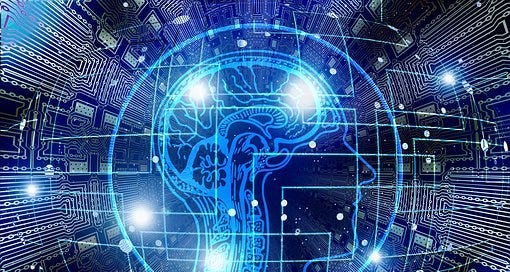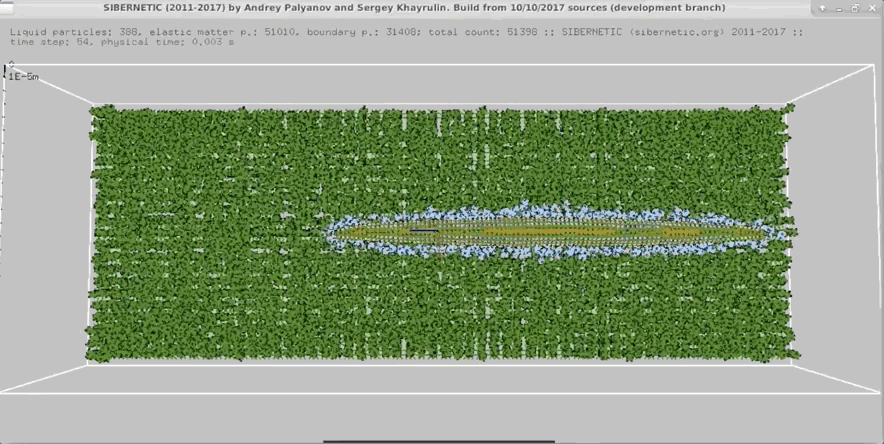Digital Immortality: A What If...
An exploration into the mapping, emulation, and uploading of our minds to a digital substrate.
This is essay 3 of 6 essays for 1729 Writers Cohort #1. Apply to 1729 today at https://www.1729.com.
This post is the third of hopefully a series of essays that try to reflect on issues related to aspects of transhumanism, which can arguably be defined as the enhancement of the human condition through technology to achieve more longevity, cognitive abilities, emotional states, and other previously seemingly impossible feats. Again, I am not an expert in this emerging field, so these series of essays hopefully serve as notes and logs on reflection points as I try to learn more about relevant issues.
This essay focuses on a question: Can we upload our brains onto a digital platform, a machine, or a metaverse, so that we could achieve some level of immortality after our physical flesh decays?
Mind uploading, otherwise known as whole brain emulation, has been featured often in popular culture and Hollywood movies (spoiler alert!). In the blockbuster Transcendence, Johnny Depp's character dies and his conscientiousness is uploaded onto a digital web through artificial intelligence computer interface. In the movie Chappie, a main character dies physically and his mind is transferred through a neural link into a robotic frame. And in the Black Mirror episode San Junipero, the physically dead find their conscious beings transported to a fictional metaverse-like beach town to live "forever.” For those who are curious or have time to kill on a long weekend, here is a complete list of mind uploading in fiction, movies, games, and popular culture.
Source: IMDB
Many of us would like to have a loved one stay with us forever — even if it means transferring their minds onto a digital form. And someday, many of us would probably love to join our loved ones for eternity in digital Neverland. The physical body can wither and decease, but our consciousness can live on.
But…how much of this is science fiction and how much of this can actually be achieved? And at what cost?
On the more optimistic end, Ray Kurzweil, renowned futurist and director of engineering at Google, predicts that we will be able to upload our brains onto computers by the year 2045. How far do we have actually to go to get there? In rough terms, we need to both accurately map the complex neural pathways in our brains (developing what is known as a connectome, or a complete map of the human brain's neural connections) as well as reconstruct or emulate these pathways in a workable and sustainable substrate.
Brain Mapping
Mapping and emulating the brain is much harder to do than it sounds. Contrary to the rumor that only 10% of the brain gets used, we actually utilize close to 100% of our brains on a daily basis. There are on average 86 billion neurons interconnected in the human brain. Each neuron can have connections to up to 10000 other neurons. The number of synapses (roughly the links between neurons) just in the cerebral cortex of the human brain amount to over 1000 trillion. For reference, that's about the same magnitude as the number of stars in over 1000 galaxies the size of the Milky Way.
In a nutshell, these are astronomical numbers that pose challenges to microscopy and scanning. As a reference point, one known completed connectome project involved brain mapping of a round worm known as Caenorhabditis elegansis. The OpenWorm Project subsequently used the mapping to create the first ever digital organism emulation. The number of neurons mapped and emulated? A whopping 302! And only several thousand neuron connections. The OpenWorm Project has accomplished amazing feats, but the differences in complexity underscores how much progress needs to be made until we really can map a real human brain. As a side-note, for those interested, the Open Work Project shares a docker container that consolidates its open source simulation stack and allows anyone to run simulations on a computer.
Source: OpenWorm Project
Those interested in digging into the subject of brain mapping further could learn more about The Human Connectome Project, an ongoing project within the scientific community which aims to build a comprehensive map of the neural connections in the human brain. Machine learning and artificial intelligence algorithms to segment and locate neurons are also being used to advance brain and neuron mapping. In efforts to improve artificial intelligence used to map neurons, the Seung Lab in Princeton University developed a game, called Eyewire, through which thousands of human users can check neuron reconstruction and help correct machine learning errors.
Brain Emulation
Emulation of the human brain would understandably require a supercomputer and would be an astronomical feat regardless of Moore's Law. According to Nick Bostrom and Anders Sandberg at University of Oxford's Future of Humanity Institute, emulation of spiking neural networks, or artificial neural networks, requires a CPU demand of 10ˆ18 FLOPS (FLOPS means floating-point operations per second, which is a measure of computing performance), while emulation of stochastic behavior of single molecules would approximately require a CPU demand of 10ˆ43 FLOPS (a supercomputer with that CPU power would have an earliest year estimate after 2100). Conservative estimates of the human brain's computational capacity could be somewhere between 10ˆ25 FLOPS to 10ˆ28 FLOPS. Astronomical numbers!
The Blue Brain Project aims to make progress by emulating and building digital reconstructions of the mouse brain using supercomputers. The project has recently achieved a digital reconstruction of the mouse brain's Neuro-Glia-Vascular system and plans to digitally reconstruct larger mouse brain regions.
Brain Substrate
The substrate in which the mapped and emulated brain can be hosted may take the form of a supercomputer network, a robot machine, or a metaverse. A lot still sounds very much like it's in the realm of science fiction. Much more research need to go into the development of different substrates. Considerations such as computing speed, storage, power, and sustainability for maintenance all need to be noted and resolved.
Immortality Or Illusion
Arguably, we are still fairly far away from being able to fully map, emulate, and upload our consciousness into a digital substrate. It's a long road ahead, in terms of advancing artificial intelligence driven brain mapping methods, reducing computation costs of brain reconstruction, and building sustainable digital substrates or host environments.
That said, it is still possible that, one day, a long time into the future, we will finally get there. But will we actually achieve immortality this way?
Well, not exactly in the strictest sense. Digital mind mapping and uploading could essentially produce a somewhat carbon copy of the neurons and connections in our brains for storage and preservation. To the outside world, our thoughts, memories, and tastes may exist in a computer swarm, on a robotic interface, and within a metaverse. But our “alphas” would still perish. It's analogous to making a copy of information from your computer's hard drive and uploading it onto the cloud, and then seeing the computer itself decay and get destroyed eventually.
In order to have relative “immortality,” we may actually need to first perish and give up our physical existence. Successful mapping and emulation — and that's a big if — may first require that the brain be embalmed perfectly with no option of going back. It would arguably raise many ethical and legal questions around euthanasia. Nectome, a startup focusing on brain preservation, had gone so far as pitch about euthanasia and embalming as part of the upload process.
So, will one be willing to take one's own life so that there's a chance that some copied version may achieve a digital “immortality"?
That could be a tough one. It would not be something to be recommended casually.
This post is purely for reflection and information purposes, and it does not constitute any advocacy for any political, scientific, legal, or ethical position. For earlier posts and musings, please visit whatifwhatif.substack.com.
I have exciting news to share: You can now read What If...What If.... in the new Substack app for iPhone.
With the app, you’ll have a dedicated Inbox for my Substack and any others you subscribe to. New posts will never get lost in your email filters, or stuck in spam. Longer posts will never cut-off by your email app. Comments and rich media will all work seamlessly. Overall, it’s a big upgrade to the reading experience.
The Substack app is currently available for iOS. If you don’t have an Apple device, you can join the Android waitlist here.







